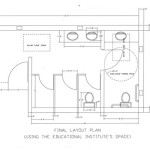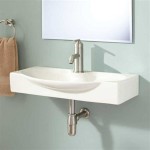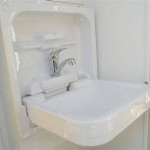How to Clean a Stinky Bathroom Drain
A foul odor emanating from your bathroom drain can be a source of discomfort and embarrassment. It can be caused by various factors, including hair, soap scum, and food particles accumulating in the pipes. Fortunately, cleaning a stinky bathroom drain is a relatively simple task that can be accomplished with common household supplies. This article will outline the steps involved in effectively eliminating the odor and restoring freshness to your bathroom.
1. Remove Obvious Blockages
The first step in cleaning a stinky bathroom drain is to remove any visible blockages. This may include hair, hairspray, toothpaste, or other debris that could be contributing to the odor. A pair of pliers or tongs can be useful for retrieving larger items. Once the drain is clear of obvious blockages, it may be necessary to proceed with a more thorough cleaning.
2. Employing Baking Soda and Vinegar
A tried-and-true method for cleaning a stinky bathroom drain involves using a combination of baking soda and vinegar. Begin by pouring a cup of baking soda down the drain. Follow this with a cup of white vinegar. The combination will create a fizzing reaction that helps to break down grease and grime. Allow the mixture to sit for at least 30 minutes before flushing with hot water.
Baking soda is a natural deodorizer and abrasive, while vinegar acts as a disinfectant and helps dissolve grease. The combination tackles multiple causes of bathroom drain odor. To further enhance the cleaning process, consider adding a cup of boiling water after flushing the drain. This will help to loosen any remaining debris and ensure a thorough rinse.
3. Utilize a Drain Cleaner
If the baking soda and vinegar method proves ineffective, a commercial drain cleaner may be necessary. Choose a drain cleaner specifically formulated for bathroom drains as these are designed to break down hair, soap scum, and other common bathroom drain clogs. Always follow the instructions on the product label carefully. Note that some drain cleaners are highly corrosive and should be used with caution.
When using a drain cleaner, it is crucial to wear protective gloves and goggles. Open windows to provide adequate ventilation. Thoroughly rinse the drain after using a drain cleaner to remove any residual chemicals. It is generally recommended to avoid using drain cleaners on a regular basis, as they can be harsh on plumbing pipes.
4. Preventative Measures
Once the bathroom drain is clean, it is important to take steps to prevent future odors. A drain strainer can be installed to catch hair and debris before they reach the drain pipe. Regularly cleaning the strainer will help maintain a drain free of blockages. It is also beneficial to flush the drain with hot water after each use to prevent clogs from forming.
Additionally, consider reducing the use of hairspray and other products that can contribute to drain clogs. Avoid flushing non-biodegradable items like cotton balls down the drain. By consistently implementing these preventive measures, you can minimize your risk of encountering a stinky bathroom drain in the future.

How To Clean A Stinky Sink Drain By Home Repair Tutor
:max_bytes(150000):strip_icc()/__opt__aboutcom__coeus__resources__content_migration__mnn__images__2018__08__sink_drain-351af8e441034f319fe07f00c091d8b6.jpg?strip=all)
How To Clean A Smelly Drain Naturally

How Can I Help A Stinky Bathroom Sink Drain Cleaning More

How To Clean Stinky Drains Liquid Plumr

How To Clean Smelly Drains Living By Homeserve

How To Clean A Smelly Sink

How To Clean A Stinky Sink Drain Home Repair Tutor

How To Clean A Smelly Drain Rainbow Restoration

How To Clean Stinky Drains Liquid Plumr

How To Clean A Stinky Sink Drain Home Repair Tutor Bathroom Smelly
Related Posts







